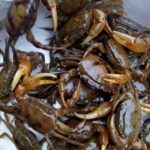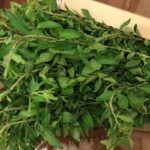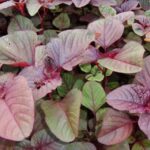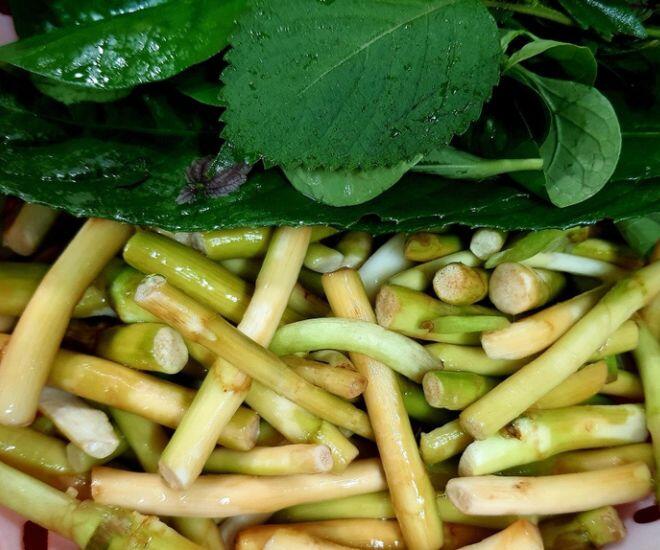
Bồng khoai, a delicacy native to the northern regions of Vietnam, is more than just a humble vegetable. Grown in the lush countryside of provinces like Thai Binh, Hai Phong, Nam Dinh, Ha Nam, and Ninh Binh, this wild vegetable thrives in moist environments, often sprouting near ponds, fields, and even wastelands. For many rural families, bồng khoai holds a special place in their hearts, evoking memories of simple yet hearty meals.
In the past, during times of scarcity, bồng khoai played a vital role in sustaining communities. Today, it has evolved from a mere hunger-satisfying dish to a celebrated delicacy, a gift from nature. With its versatility, bồng khoai transforms into delectable dishes, each bearing the hallmark of traditional Vietnamese cuisine.
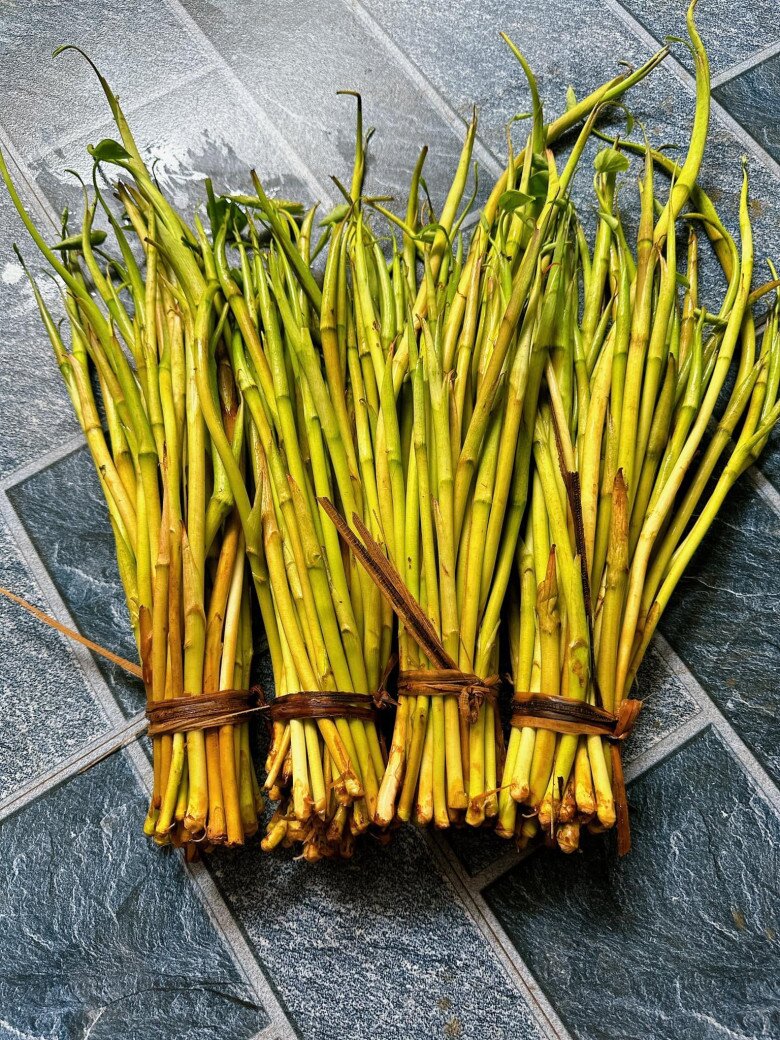
Despite its humble origins, preparing bồng khoai is an art that demands precision and a few trade secrets. This vegetable, if not handled properly, can cause an itchy sensation. Thus, meticulous preparation is key to ensuring not only a delicious but also a safe dining experience. The first step is to peel away the fibrous outer layer and gently scrape off the thin skin. Then, break the vegetable into small segments and immediately soak them in a brine solution. This twofold process eliminates the irritant resin and prevents discoloration, preserving the vibrant green hue.
Following this, a thorough rinse in clean water ensures that any residual impurities are removed. Drawing from traditional wisdom, cooks often refrain from cutting bồng khoai with knives and minimize handling with chopsticks during cooking to avert any potential itchiness.
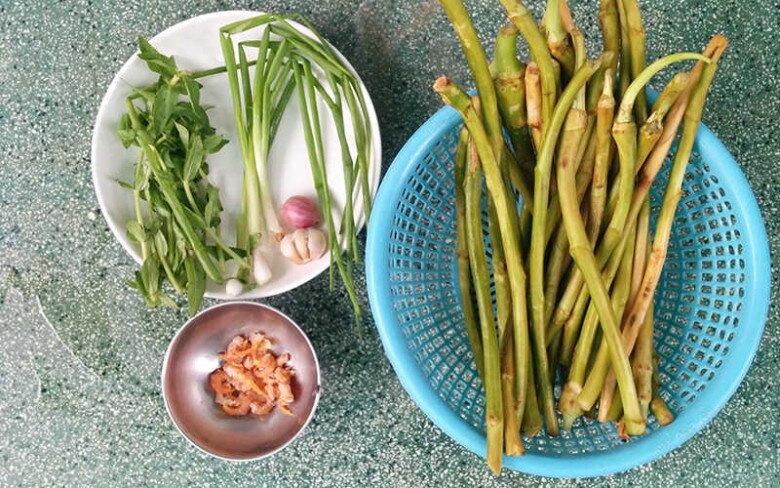
Among the myriad of bồng khoai dishes, the classic bồng khoai and snail soup stands out as a harmonious blend of flavors. The sweetness of snails, the refreshing taste of bồng khoai, and the subtle tang of fermented rice pancakes create a culinary symphony. The key to this dish lies in the careful selection of ingredients.
For the bồng khoai, opt for the youngest, most tender shoots, identified by their vibrant green hue and unopened leaves. As for snails, stone snails or spiral snails are the varieties of choice. To purge the snails of any grit and reduce their pungency, soak them in water mixed with rice bran and chili peppers. Post-soaking, the snails are boiled, and their meat is sautéed with shallots, infusing the dish with a tantalizing aroma. The snail broth, carefully strained to remove any impurities, forms the base of the soup.

The bồng khoai, too, undergoes a preliminary boiling with a hint of salt, a process that mitigates itchiness, eliminates odors, and removes residual mucus. Complementary ingredients such as tomatoes, shallots, fermented rice pancakes, and an assortment of herbs, including perilla leaves, Vietnamese mint, spring onions, and Houttuynia cordata, are indispensable in crafting the soup’s robust flavor.
In the cooking process, the tomatoes are first sautéed with snail meat, followed by the addition of bồng khoai. The snail broth is then poured in, along with the fermented rice pancakes, shrimp paste, and seasonings to taste. To achieve the ideal consistency, the soup is simmered over low heat, avoiding excessive dilution. Just before serving, the herbs are tossed in, adding the final flourish of flavor.
Depending on personal preference, the bồng khoai can be cooked until tender or further softened for easier consumption with rice. The resulting soup boasts a rich, sweet, and mildly sour flavor profile, offering a refreshing dining experience, especially during hot summer days.
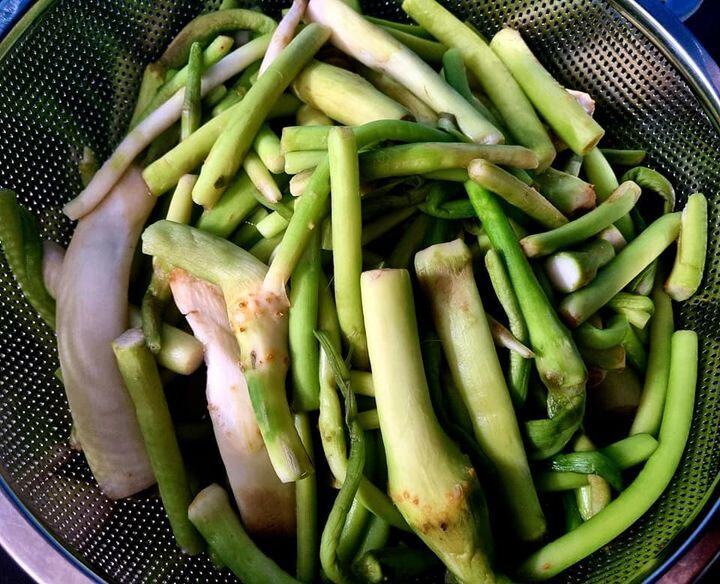
Beyond the classic snail soup, bồng khoai shines in a myriad of culinary creations, including soups made with ribs, fish, or shrimp. Each variation showcases the versatility of this unassuming vegetable, highlighting its ability to blend seamlessly with diverse ingredients.
However, it is important to approach the consumption of bồng khoai with a few considerations in mind. Given its cooling properties, bồng khoai is best enjoyed during lunchtime or on hot days to take advantage of its heat-relieving qualities. Conversely, it is advisable to refrain from eating it at night to prevent any stomach discomfort.
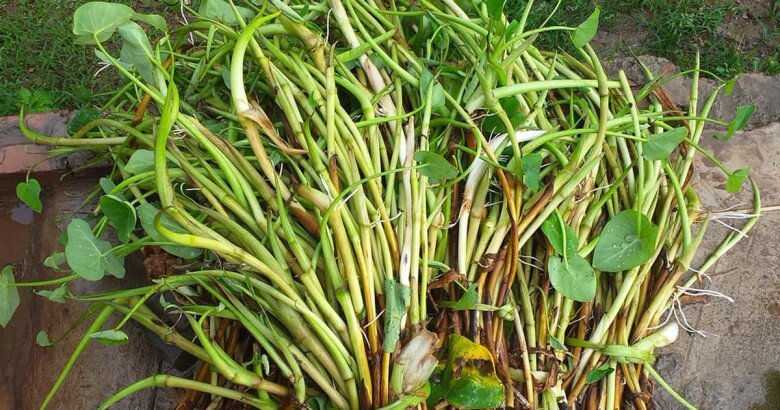
Additionally, when selecting bồng khoai, steer clear of bruised, discolored, or overly soft stalks, as these may indicate the presence of irritant resin, which can cause itching or allergic reactions. Individuals with sensitive stomachs or those experiencing mild fatigue or coughs should also exercise caution when indulging in this delicacy.
The Ultimate Guide to Cooking Crab Soup: A Delicious, Fragrant, and Crystal-Clear Broth
“Canh cua đồng is a delicious and popular Vietnamese dish, especially during the summer months. But not everyone knows the secret to making it taste truly exceptional. With the right ingredients and techniques, you can elevate this humble dish into a culinary masterpiece. Imagine impressing your family and friends with your unique and mouthwatering version of this traditional favorite. Stay tuned as we reveal the ultimate guide to mastering the art of cooking Canh cua đồng.”
From Weeds to “Liver-Cooling Delicacy”: Still Sold Out in the City at 75,000 VND per kg
“Once dismissed as a mere weed, this plant is now a sought-after delicacy in urban areas. With its unique bitter-sweet taste, the ‘Rau Cu Khoi’ vegetable is not only delicious but also packed with nutrients. A true gift that keeps on giving, it can be harvested year-round with just a single planting.”

























